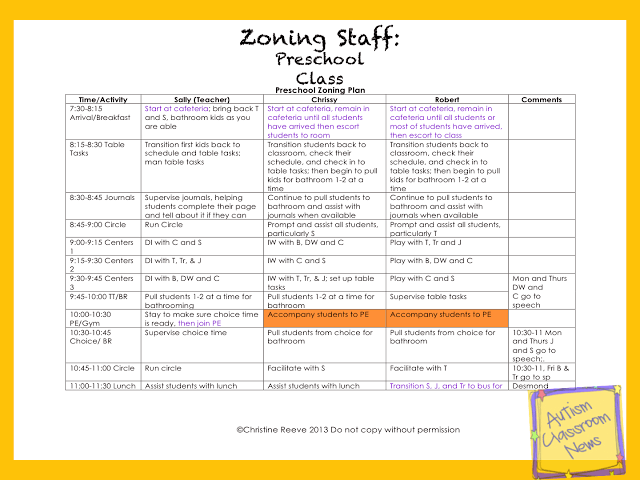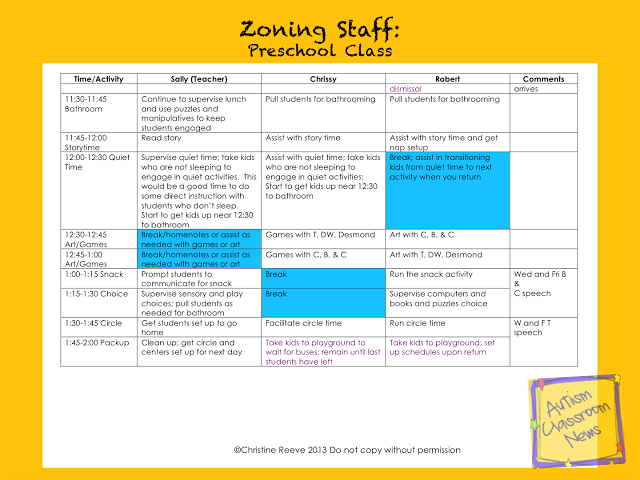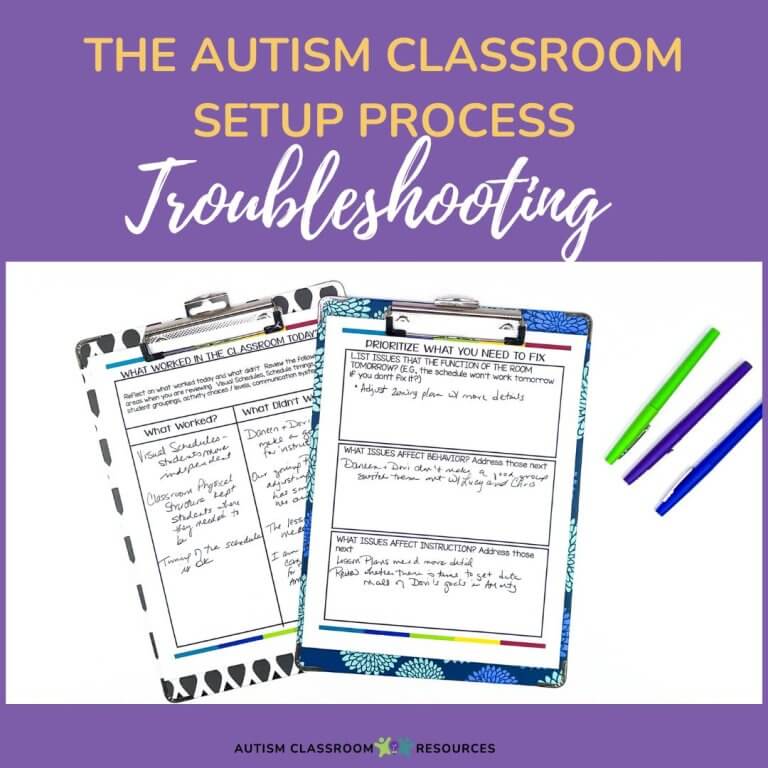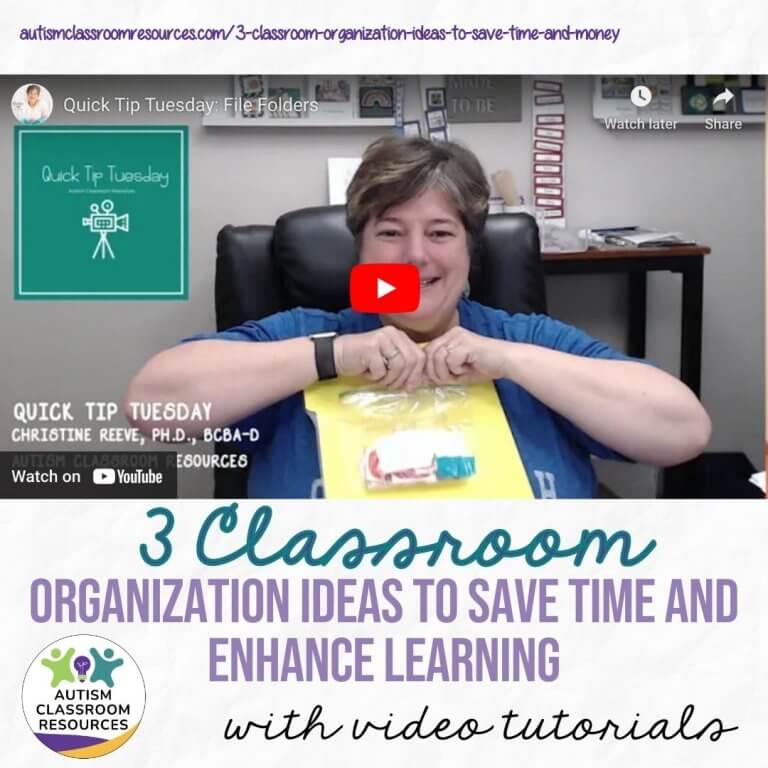Sharing is caring!
Note from Chris: Ok, before I start talking about zoning, I have a couple of announcements. First, if you are a Facebook fan, there are 2 freebies up on the site for anyone who likes the page. Second, I have added another set of Functional Reading Task Cards focused on restaurant menu words. They will shortly be bundled with the other 2 sets of Functional Reading Task Cards and they will become part of the Secondary Structured Work System Bundle. If you have already purchased the structured work systems bundle, in the next few days it will be updated and you can download the new set for free! I will add the links for the new products when they are available.
So as we continue our back to school classroom setup, you can check out other posts in this series by clicking here.
In my last post I talked about zoning plans and there was a free zoning plan form to download. I also included one below from a preschool classroom as an example. To help you develop zoning plans for your classroom, I thought I would make a list of things to remember (or questions to ask) when writing your zoning plan. You will no doubt find more as you work with it, and a zoning plan changes over time based on the needs of the class.
- Are all the students accounted for within the plan during the day? I generally go through and count the students for each activity to make sure I’ve accounted for them all.
- Who sets up activities before the students get there? This is critical to reduce that dreaded downtime and keep students engaged throughout the day. You might have the students do some of the set up, but put that in the zoning plan so that everyone knows. That way the staff all remember that the students need to get their own materials, rather than putting them all out for them.
- Who is cleaning up each activity so the next one scheduled in that area can take place? This might happen for some areas after school or during planning (I know, what’s that?). This prevents all the staff from cleaning instead of working with the students–because you designated someone (again, it could include a student) to clean up.
- When do staff go to lunch and break? I talked in the last post about why this is critical. In addition to making sure it happens, it’s important to make sure that you have scheduled coverage for it and planned activities that can take place with fewer staff.
- Who sets up the visual schedules? Whether during the day (if you have to change them out midday) or at the end of the day, make this someone’s job to assure it gets done. There is nothing worse than going to the schedule and having it be wrong or missing. So choose someone on the team with good organizational skills. Because when the others set it up, trust me, it drives him or her crazy.
- Who is taking data? Yeah, it doesn’t always have to be the teacher. However, you do have to make sure it’s assigned and the person responsible knows how to do it.
- Who is running each group activity? Again, this person doesn’t always have to be the teacher. Sometimes it’s really helpful for the teacher to stand back and watch the students to figure out what support is needed. Your best teaching can sometimes take place supporting an activity rather than being in charge of it. It’s also a great opportunity to train staff on how the students should be prompted.
- How will transitions be handled? When students transition within the room (or outside the room) can they go independently? If you have a self-contained classroom in which they can’t transition independently, you should work out an easy way to organize them. For instance, do all the students go to the schedule at the same time or does this cause a major traffic jam? Perhaps the person staffing one center takes their group to the schedule, transitions to the next center, picks up that set of students and moves them through the transition to pick up the next group…and so on. This way, the students who aren’t currently checking their schedule can stay engaged with support in their areas and are less likely to run away or have problems. Same thing for students included in general education. Do they need help transitioning during the day? If so, who is helping and what does that look like?
- Are students supported when needed? For students with autism this typically involves support at times when students aren’t supported, like lunch and recess. This needs to be integrated into the staff schedule to support social skills or behavior during those times if those are goals that students are working on.
- Can you zone in related service providers? I shared an example of a schedule earlier in this series in which the speech pathologist ran a center so we had 4 instead of 3. That needs to be included in the zoning plan. The speech pathologist might best serve a classroom of nonverbal students by coming in at snack time or morning meeting to both support and teach communication skills while also modeling for the staff how to continue those efforts when the SLP isn’t there anymore.










